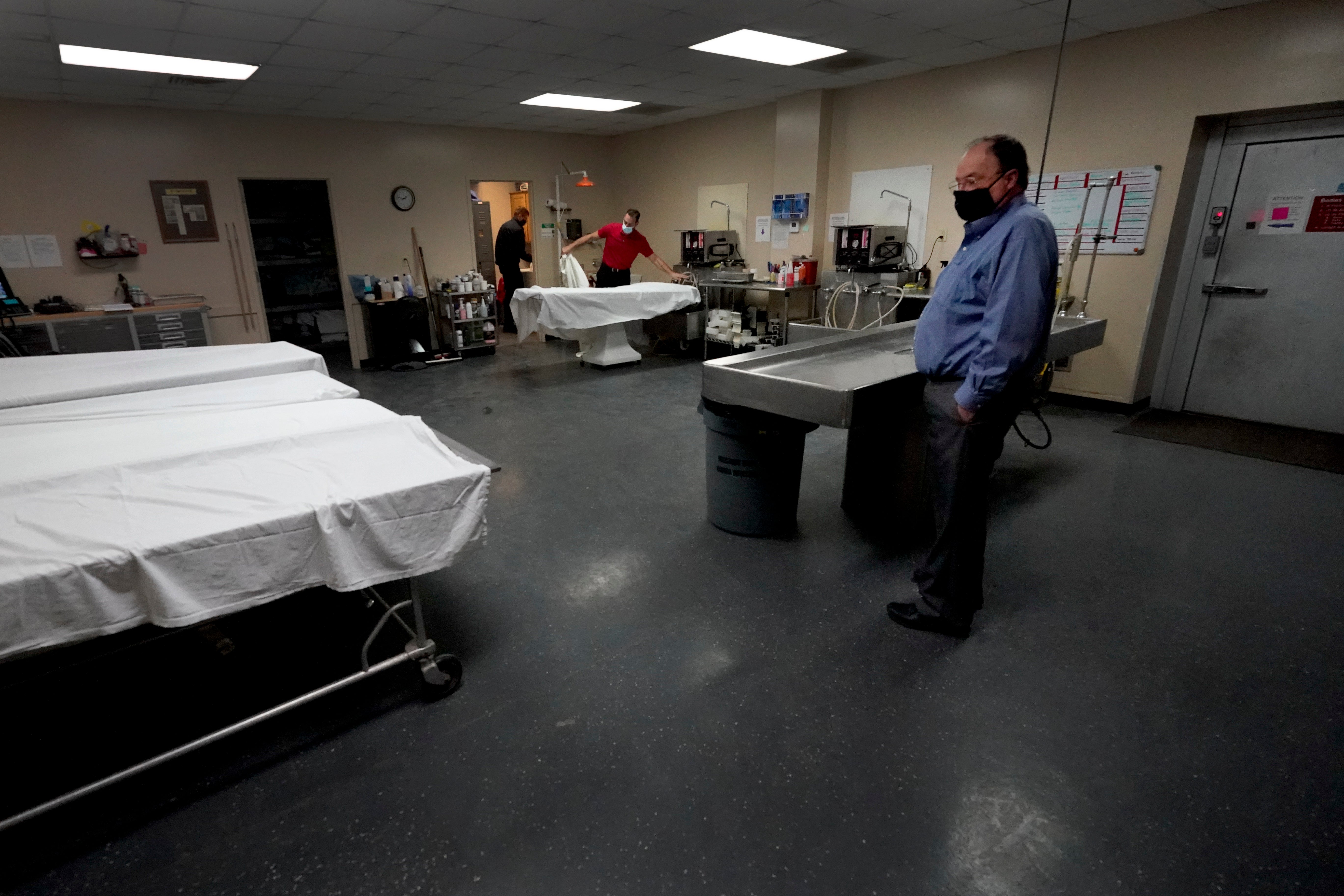More people are choosing to die at home during pandemic
National hospice organizations are reporting that facilities are seeing double-digit percentage increases in the number of patients being cared for at home

Your support helps us to tell the story
From reproductive rights to climate change to Big Tech, The Independent is on the ground when the story is developing. Whether it's investigating the financials of Elon Musk's pro-Trump PAC or producing our latest documentary, 'The A Word', which shines a light on the American women fighting for reproductive rights, we know how important it is to parse out the facts from the messaging.
At such a critical moment in US history, we need reporters on the ground. Your donation allows us to keep sending journalists to speak to both sides of the story.
The Independent is trusted by Americans across the entire political spectrum. And unlike many other quality news outlets, we choose not to lock Americans out of our reporting and analysis with paywalls. We believe quality journalism should be available to everyone, paid for by those who can afford it.
Your support makes all the difference.Mortuary owner Brian Simmons has been making more trips to homes to pick up bodies to be cremated and embalmed since the pandemic hit.
With Covid-19 devastating communities in Missouri, his two-person crews regularly arrive at homes in the Springfield area and remove bodies of people who decided to die at home rather than spend their final days in a nursing home or hospital where family visitations were prohibited during the pandemic.
He understands all too well why people are choosing to die at home: his own 49-year-old daughter succumbed to the coronavirus just before Christmas at a Springfield hospital, where the family only got phone updates as her condition deteriorated.
"The separation part is really rough, rough, rough," said Simmons. "My daughter went to the hospital and we saw her once through the glass when they put her on the ventilator, and then we never saw her again until after she died."
Across the country, terminally ill patients — both with Covid-19 and other diseases — are making similar decisions and dying at home rather than face the terrifying scenario of saying farewell to loved ones behind glass or during video calls.
"What we are seeing with Covid is certain patients want to stay at home," said Judi Lund Person, the vice president for regulatory compliance at the National Hospice and Palliative Care Organization. "They don't want to go to the hospital. They don't want to go to a nursing home.
"National hospice organizations are reporting that facilities are seeing double-digit percentage increases in the number of patients being cared for at home.
The phenomenon has played out Carroll Hospice in Westminster, Maryland, which has seen a 30 per cent to 40 per cent spike in demand for home-based care, said executive director Regina Bodnar. She said avoiding nursing homes and coronavirus risks are the biggest factor behind the increase."
Lisa Kossoudji, who supervises nurses at Ohio's Hospice of Dayton, pulled her own mother, now 95, out of assisted living and brought her home to live with her after the pandemic hit. She had gone weeks without seeing her mother and was worried that her condition was deteriorating because she was being restricted to her room as the facility sought to limit the potential for the virus to spread.
Her mother, who has a condition that causes thickening and hardening of the walls of the arteries in her brain, is now receiving hospice services. Kossoudji is seeing the families she serves make similar choices."
Lots of people are bringing folks home that physically, they have a lot of physical issues, whether it is they have a feeding tube or a trachea, things that an everyday layperson would look at and say, 'Oh my gosh, I can't do this,"' she said. "But yet they are willing to bring them home because we want to be able to be with them and see them."
Before the pandemic, hospice workers cared for patients dying of heart disease, cancer, dementia and other terminal illnesses in long-term care facilities and, to a lesser extent, home settings. Many families hesitated to go the die-at-home route because of the many logistical challenges, including work schedules and complicated medical needs.
But the pandemic changed things. People were suddenly working from home and had more time, and they were more comfortable with home hospice knowing the alternative with a lack of visitation at nursing homes."
What happened with COVID is everything was on steroids so to speak. Everything happened so quickly that all of a sudden family members were prepared to care for their loved ones at home," said Carole Fisher, president of the National Partnership for Healthcare and Hospice Innovation. "Everything accelerated."
"I have heard families say, 'I can care for my aged mother now very differently than I could before because I am working from home,"' she added. "And so there is more of a togetherness in the family unit because of COVID."
Dying at home isn't for everyone, however. Caring for the needs of a critically ill relative can mean sleepless nights and added stress as the pandemic rages.
Karen Rubel recalled that she didn't want to take her own 81-year-old mother to the hospital when she had a stroke in September and then pushed hard to bring her home as soon as possible.
She is president and CEO of Nathan Adelson Hospice in Las Vegas, which has designated one of its in-patient facilities for COVID-19 patients."I get where people are coming from," she said. "They are afraid."
The Associated Press


Join our commenting forum
Join thought-provoking conversations, follow other Independent readers and see their replies
Comments